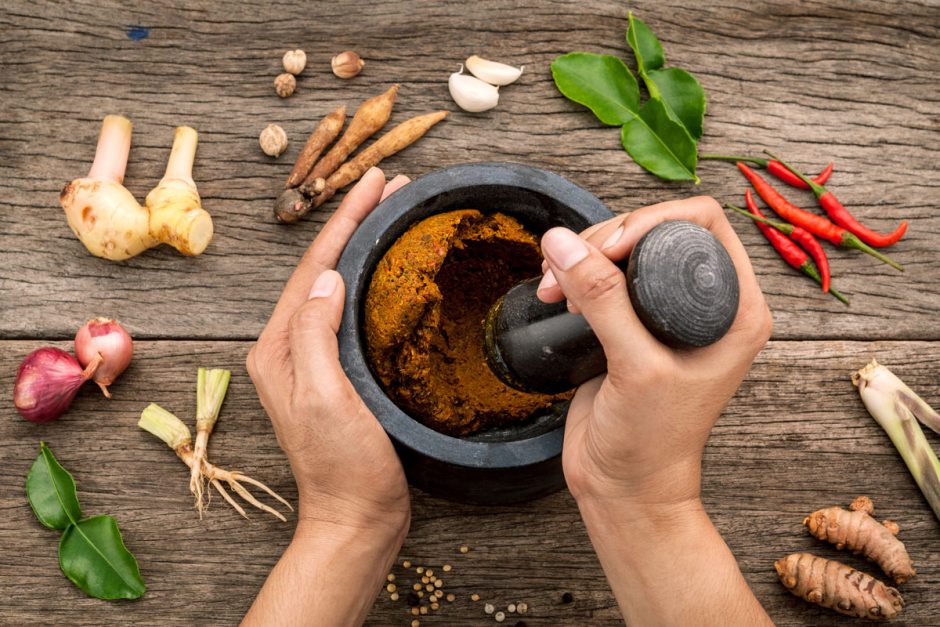Perk Up with 6 Tasteful Malaysian Drinks
Lighten your mood and rejuvenate your senses with 6 must-try Malaysian drinks!
Discover the authentic in Asian cuisine food

If you love curry, you need to make your own curry paste. There are some excellent pastes for sale out there, and when you’re whipping something up midweek it makes a lot of sense to use some premade stuff. But there really is no comparison between pastes you make yourself and those you can buy at the supermarket.
Curry pastes are the core flavour base for most curries, so it makes sense that the more fragrant, even pungent the curry paste, the more intense the flavour of the curry. This is where homemade curry paste comes into its own. Not only can you customize it to suit your palate – more chilli, more garlic, more cumin, you decide! – the flavour punch is far more pronounced.
The best part about the whole exercise is it’s much easier to make paste than you think. Whether you’re wanting to make a fiery green paste, a mellow yellow or a creamy kari ayam, you can find basically all the ingredients in your local supermarket, and do all the simple assembly in your own kitchen.
To guide you through the basics, we’ve put together a list of tips and tricks, a how-to-curry paste if you will. Get these easy steps down and you’ll be putting your local takeaway to shame in no time.
A non-stick frying pan is great for toasting the spices and frying any fresh herbs, garlic or ginger.
If you use wooden spoons, it’s a great idea to keep one just for cooking curries. The wood absorbs flavour that can be released if used in other dishes.
A mortar and pestle are mandatory, especially if you like a coarser, more rustic paste. Blenders are good too, but you’ll need a stick blender with a small bowl attachment to make sure you blend all the toasted spices.
A spice grinder can save you some time and physical effort, especially if you’re making curry paste in bulk.
Don’t burn the spices when you toast them. When they turn aromatic – meaning you can smell them – take them off the heat and transfer into a bowl. You can leave them in the pan if you wish, but be aware they’ll continue to cook even when off the heat.
Be generous with your spices. Recipes are often conservative with their most pungent ingredients, so don’t be afraid to add more. Curry paste is the flavour base after all!
Some of your ingredients can be frozen and saved for later, like chilli, coriander roots and garlic. If you buy an excess of ingredients, look for ways to save them/preserve them until you next want to make a curry paste.
Don’t be afraid to add spice, but be sensible. Replace 1 long red chilli with 3 birds-eye, or if you just want to turn the spice up a little, leave the seeds in. Dried chillies are great too, so just experiment until you find the right combination.
You can place the paste in jars with lids and keep them in the fridge if you’re planning on using them regularly. Just remember you’re using a bunch of fresh ingredients, so it won’t last forever. Freezing the paste will greatly extend its life. A novel way to help portion out your paste is to freeze it in ice-trays. Then just pop out a couple of cubes when you’re ready for your next curry.
Asian Inspirations have a number of great curry paste recipes for you to try. Remember, once you’ve mastered the paste, you can start adding to it until it becomes something truly yours!

Lighten your mood and rejuvenate your senses with 6 must-try Malaysian drinks!

Pair your hearty barbecues with these refreshing Asian delights!

What are the properties of ginger, and how to pick, store and use ginger in your cooking? Find out here!